#1660s fashion
Text

Dazzling Joan Bennett as Maria Theresa in The Man In The Iron Mask 1939 💋
#old hollywood#beauty#romantic drama#1930s cinema#historical drama#1660s fashion#17th century france#king louis xiv#the four musketeers#joan bennett#louis hayward#warren william#marion martin
15 notes
·
View notes
Photo

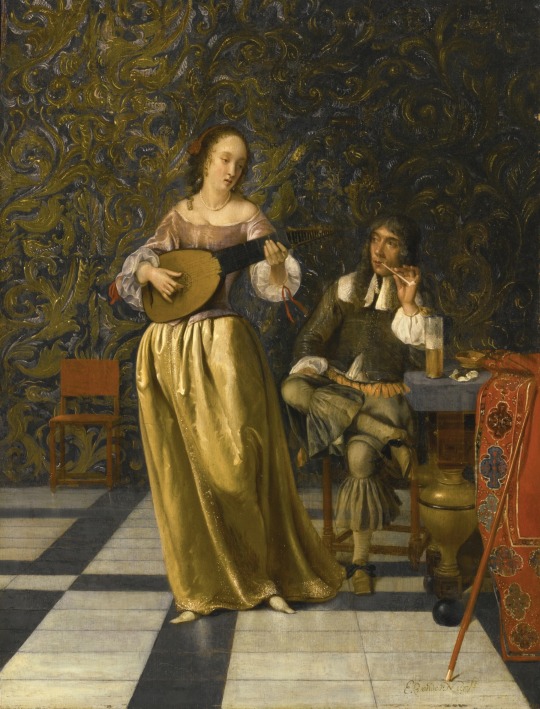


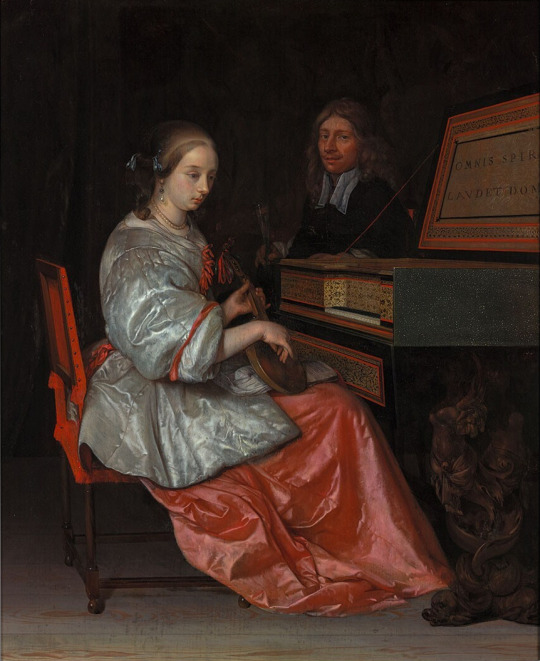
Back to the mid-1600s (from top to bottom) -
Woman Washing her Hands by Eglon van der Neer (Mauritshuis - Den Haag, Zuid-Holland, Netherlands). From pubhist.com/w40585 807X1000 @72 309kj.
ca. 1660 Lady playing a lute with a gentleman seated at a table in an interior by Eglon Hendrik van der Neer (Sotheby's - 28Jan16 auction Lot 28)2880X3782 @72 3.3Mj.
1665 La Grande Dame by Eglon Van der Neer (private collection). From Wijimedia; fixed some cracks, spots, & veiling reflections w Pshop 1721X2048 @72 1.7Mj.
ca. 1666-1670 Isabella d'Este by Frans Denys (Galleria Nazionale - Parma, Emilia Romagna, Italy). From tumblr.com/roehenstart; fixed spots w Pshop 1022X1280 @72 394kj.
1669 Woman at a virginal with a cittern on her lap, accompanied by a man by Eglon van der Neer (Museum Boijmans Van Beuningen - Rotterdam, Zuid-Holland, Netherlands). From Wikimedia 2802X3430 @72 2.1Mj.
#1600s fashion#Louis XIV fashion#Baroque fashion#middle 1600s fashion#1660s fashion#Eglon van der Neer#off shoulder neckline#petticoat#Eglon Hendrik van der Neer#paned sleeves#Isabella d'Este#Frans Denys#sheer bertha#jacket
76 notes
·
View notes
Text


Knitted Shirt
1650s-1690s
Norway
Nasjonalmuseet
#knitwear#fashion history#historical fashion#17th century#1650s#1660s#1670s#1680s#1690s#stuart era#blue#floral#embroidery#norway#nasjonalmuseet
371 notes
·
View notes
Text
Surviving 17th century dresses
1650s-1660s

Dress of Electress Magdalena Sybilla of Saxony
1650
Saxony, Germany
SKD

Dress of Electress Magdalena Sybilla
1650
Saxony, Germany
SKD
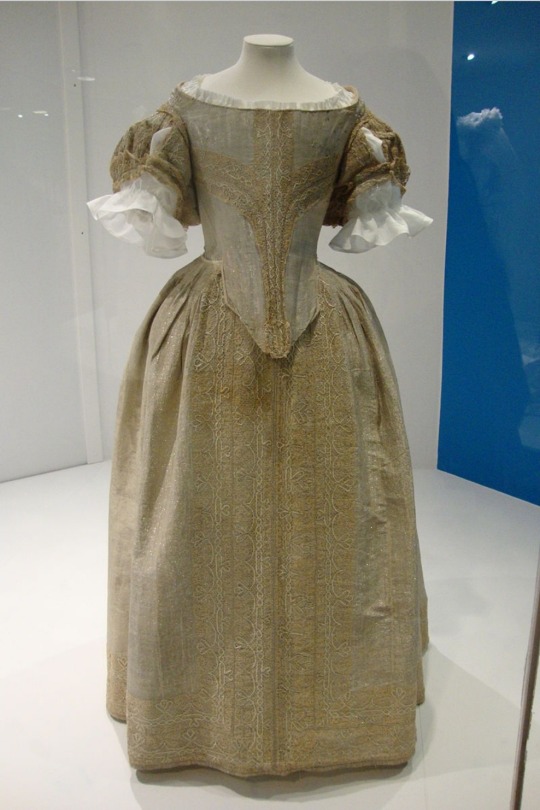
English court dress from the 1660s. Silver tissue. Fashion Museum, Bath.
Source: Wikipedia
193 notes
·
View notes
Photo
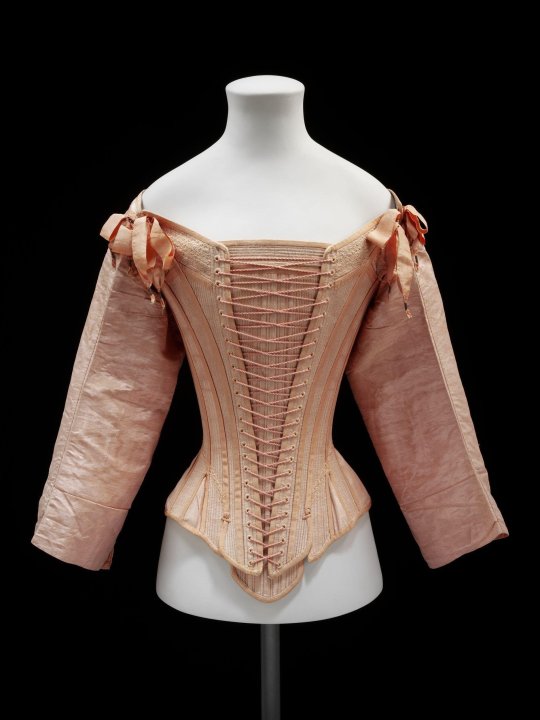
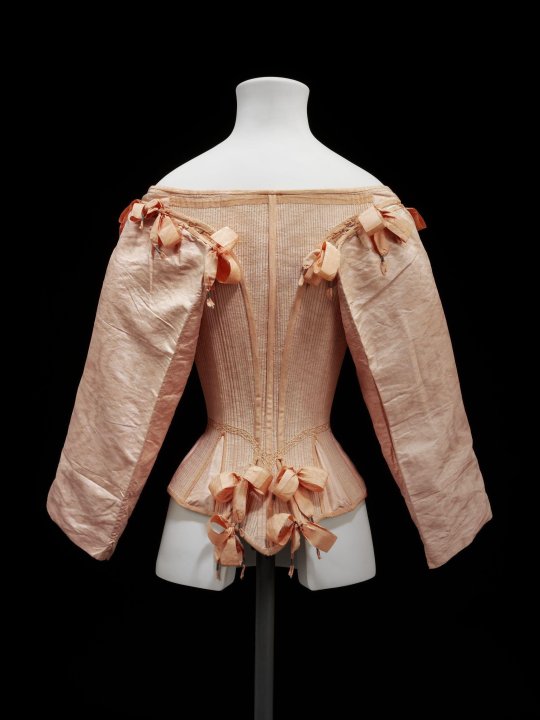

Stays & Busk | c.1660-1680 | Dutch
#stays#busk#1660#1660s#1670#1670s#1680#1680s#17th century#dutch#pink#historic fashion#historical fashion
296 notes
·
View notes
Text


- Margot Lister, Costume
8 notes
·
View notes
Text

If you check the embroidery closely you still see the traces of blood of little Indonesian girls’ fingers.
Aldens Catalog Spring and Summer - 1966
7 notes
·
View notes
Photo
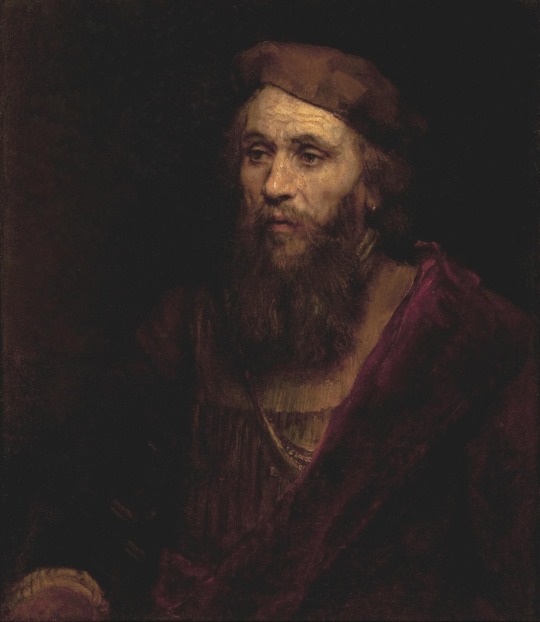
Portrait of a man by Harmensz van Rijn Rembrandt, 1661, Holland.
26 notes
·
View notes
Text
1660s male fashion be like " 'orrible Jolly Ollie be dead! HUZZ-AH! Let us drape ourselves in a million loops o' ribbon!!!" 😆
0 notes
Text
My Fair Lady: Late Baroque Era Set

(no fancy thumbnail this time, sorry) ♫ < baroque music
Please READ ALL OF THIS before downloading. I will not answer an ask if it was answered here. Read.
This is a late 17th-century/early 18th-century Baroque Set. You will get 25 items for women, girls, and toddlers! Towards the bottom, I will give you tips to start a Baroque Era Save (people to find on gallery and men/boy attire).
I would like to thank @the-melancholy-maiden @linzlu @sychik @batsfromwesteros @vintagesimstress @cringeborg @acanthus-sims @stereo-91 and sims 2 creator maya40 for the stuff I've used to make all of this. I'm sure there are more creators but I cannot recall their names off the top of my head. DM me if you see a piece of your mesh here so I can give proper credit. I would also like to thank @belleophile for testing these items for me.
The stuff in this set can work for the late 1660s-early 1710s.
WHAT YOU GET: You will get 3 hat hairs, 1 for each age I listed above, 2 Fontanges for adults that work with the hat slider mod, 4 adult hairs, an adult baroque hair comb piece, 1 adult baroque sash accessory used for court and portraits, 1 ribbon hair piece to go with a hair, and 13 dresses (2 1670s/1660s mantuas, 1 1680s-1710s Habit used for Hunting or Riding, 1 1690s-1710s court dress used for court occasions, 1 1690s-1710s jeweled portrait dress and 1 1660s-1670s portrait dress with sash, and finally 7 1690s-1710s mantuas used for everyday, formal, and seasonal wear. I've included 1 dress for a child and 1 dress for a toddler as well).
SMALL NOTICE ABOUT THE PIECES: The hairline on the hairs will not behave correctly if you have head shape presets on the sim. I've tried fixing that but no luck. If I manage to fix it, I will update it. The Hat Hairs are found in the HAT category and are not compatible with hairs you MUST download the hair files that I'll be including with them. This being said, if you remove sim clothing while they have the hat hair on, it removes the hair override too. It's strange, but just put the hat back on and it should fix. The comb, and ribbon accessory are also found in the hat category. The Sash is found in the GLASSES category. The 1660s-1670s Mantuas are not compatible with shoes, leggings, or socks. I've removed these options in CAS tools so you shouldn't have to worry about clipping. The Barbara 1670s Dress has a sash meshed onto it, and because of this does not behave well with bigger bodies. The same applies to the Henrietta 1670s Dress, as the pearls don't behave with bigger bodies. Same with the Sarah 1670s Dress jewels. The 1690s-1710s Mantuas will have small gaps if the sim is plus-sized. I have tried to fix these issues, but no luck. The hat hair fontange looks a bit gray without reshade or a lighting mod. @northernsiberiawinds has some good lighting mods. Other than that, it's fine. Below, is how it will look white with a lighting mod.



Everything has AT LEAST 20 swatches. Some things have more. There are only a few things that don't have this many swatches.
Here are some pics up close of what you are getting.
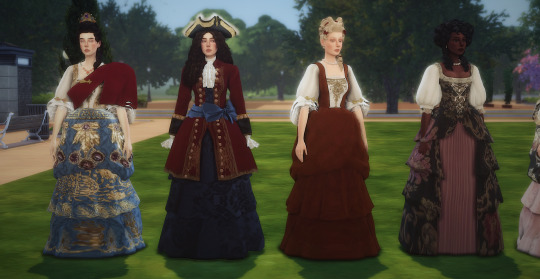

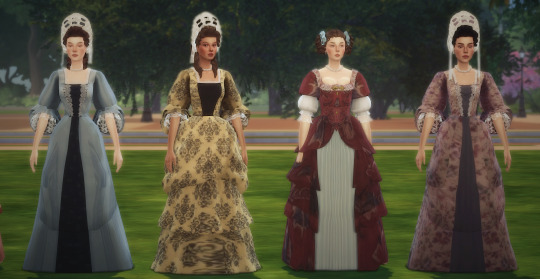
Here are some pics/fashion plates from this era.
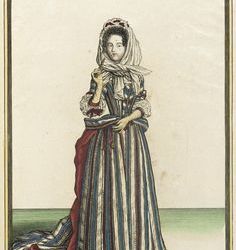
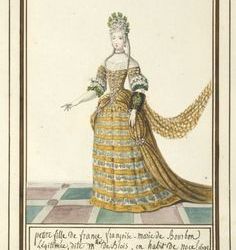

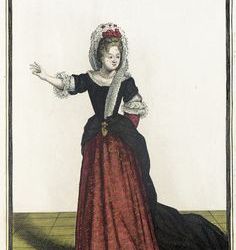
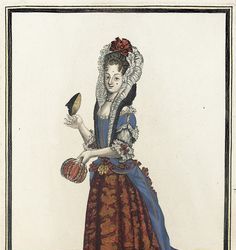
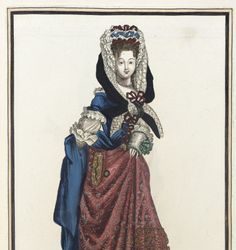
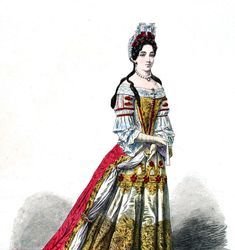
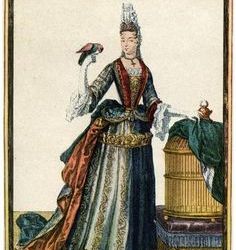

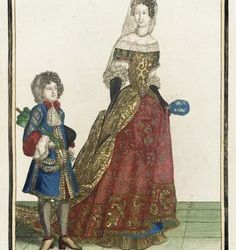
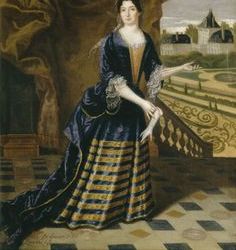

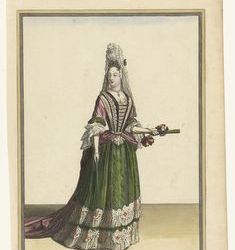
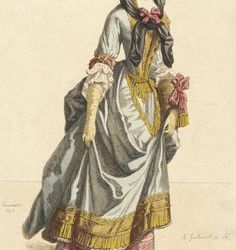

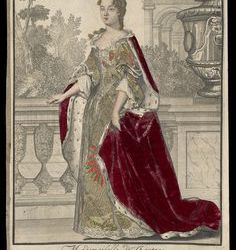
Did I forget the 1680s mantua..? Oh no! Luckily, I've included this surprise 1680s dress you'll be getting as well for reading all of that. So 26 items! (here you can see hat hair fontange without lighting mods installed)
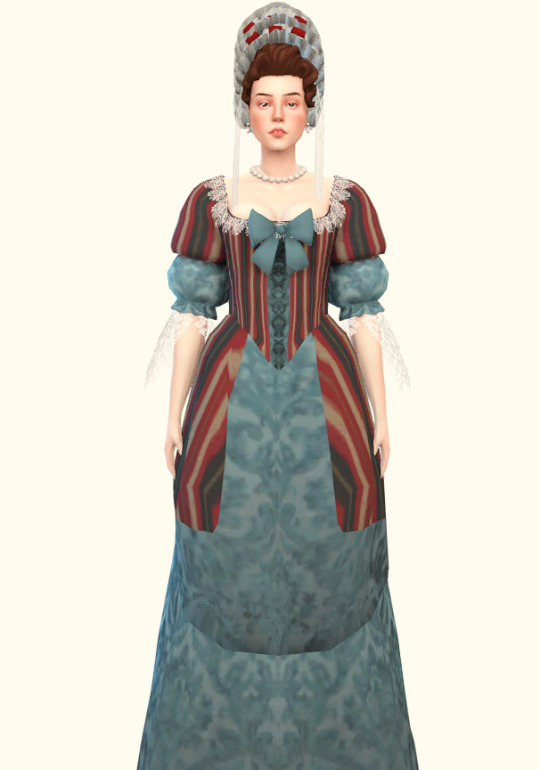
BAROQUE SAVE TIPS: These dresses will work for winter, summer, and traveling wear. Just add a fichu for summer wear or a shawl. For winter wear just add some long gloves and a cape. For men's stuff from this era, @stereo-91 has recolored some acanthus outfits which can be found here. I'll show you how they look below. I also recommend going to his gallery (ROTAMETERS91) as he has AMAZING builds for this era. For a little boy, @acanthus-sims has some stuff that can work.
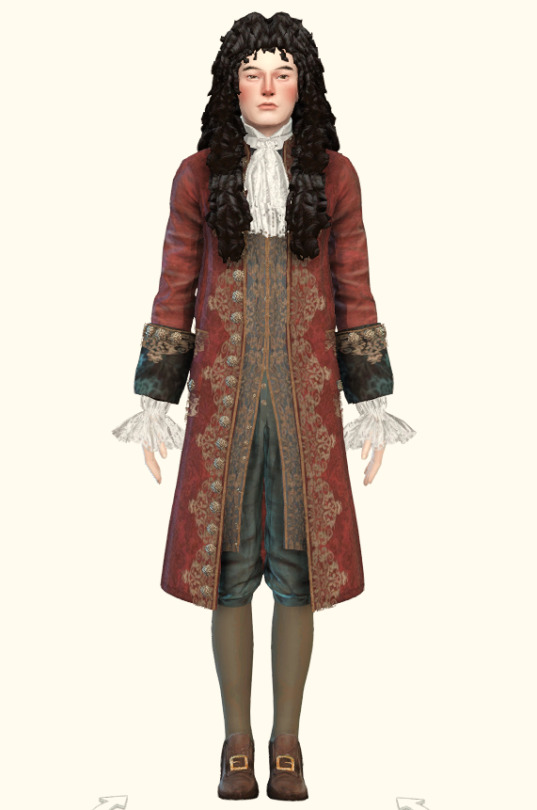

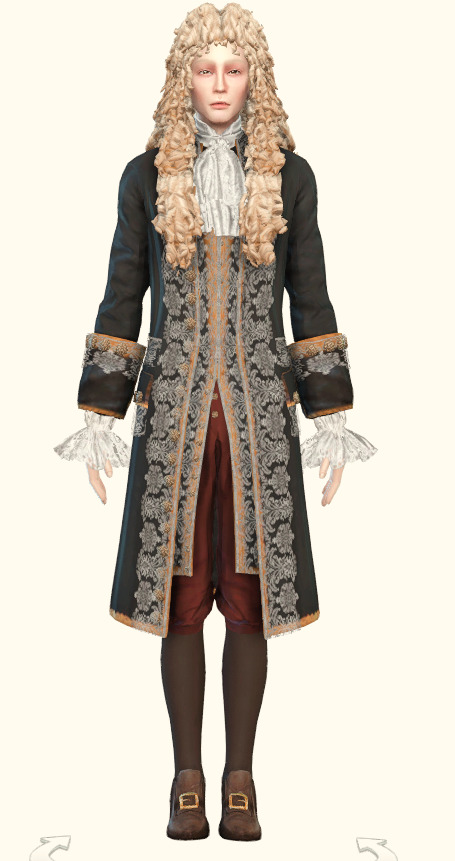
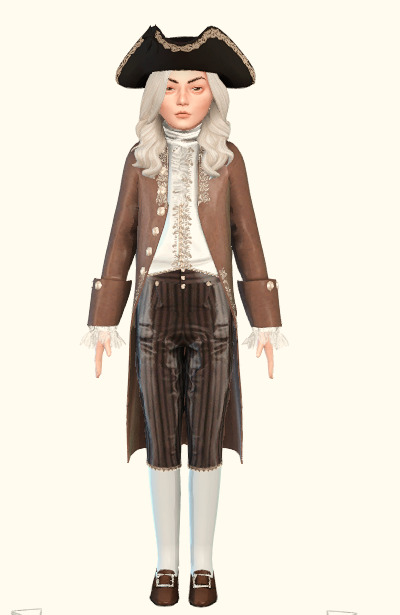
DOWNLOAD
#baroque ts4#baroque sims 4#sims 4 baroque#sims 4 decades#my cc#historical cc#ts4 cc#historical sims 4#sims 4 historical#historical sims#sims 4 cc#the sims cc
344 notes
·
View notes
Note
I've seen a post you've reblogged and added to, among many things about women showing nipples. Can you recommend any ref material (articles, videos, etc.) are share your knowledge about this? Cause I'm curious about that, as nowadays going out in a shirt without a bra makes you indecent, while in like 90s it was okayish? I wonder how it was in previous centuries.
There is a really cool academic paper about bare breast dresses in 17th century England specifically. I think anyone can read it by creating a free account.
Abby Cox also has a good video about the cleavage during the past 500 years in which she goes through also the nip slip phenomena.
I don't have other sources that specifically focus on this subject, though many sources about specific decades touch on it, but I do have my primary source image collection, so I can sum up the history of the bare nipple.
So my findings from primary source images (I could be wrong and maybe I just haven't found earlier examples) is that the Venetians were the first ones to show the nipple for courtly fashion. At the same time in other places in Europe they sported the early Elizabethan no-boob style that completely covered and flattened the chest. In the other corners of Italy the necklines were also low but less extreme. Venetian kirtle necklines dropped extremely low as early as 1560s and they combined extremely sheer, basically see-through partlets with their kirtle. First example below is a 1565-70 portrait of a Venetian lady with the nipples just barely covered waiting slip into view with a movement of arm. There was an even more extreme version of this with the kirtle being literally underboob style, still with a sheer doublet. Though I believe this was not quite for the respectable ladies, since I have only seen it depicted on high class courtesans. They were not exactly respectable ladies, but they did have quite good social position. The second example is a 1570s depiction of a courtesan, which is revealed by the horned hairstyle. By the end of the century this underbust style with only see through fabric covering breasts, had become respectable. In the last example it's shown on the wife of the Venetian doge in 1597.
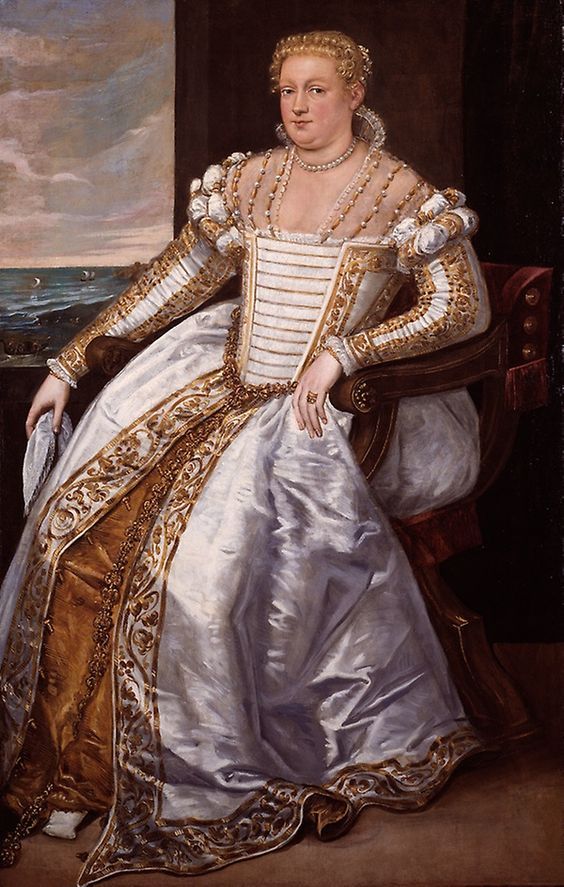
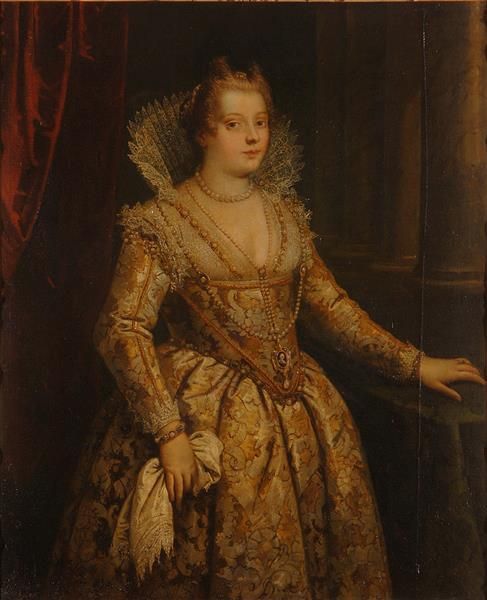

Around the same time, at the very end of 1500s, the extremely low cut bodice fashion enters rest of Europe. The low cut style was present in the bodices of all classes, but the nipple was really only an aristocrat thing. The lower classes would cover their breasts with a partlet, that was not sheer. Bare breast was ironically from our perspective a show of innocence, youthful beauty and virtue, and to pull off the style with respect, you also had to embody those ideals. Lower class women were considered inherently vulgar and lacking virtue, so a nipple in their case was seen as indecent. Bare boobs were also a sort of status symbol, since the upper class would hire wet nurses to breastfeed their children so they could show of their youthful boobs.
Covering partlets and bodices were still also used in the first decade of 1600s by nobles and the nip slip was mostly reserved for the courtly events. The first image below is an early example of English extremely low neckline that certainly couldn't contain boobs even with a bit of movement from 1597. The 1610s started around 5 decades of fashion that showed the whole boob. The first three were the most extreme. Here's some highlights: The second image is from 1619.
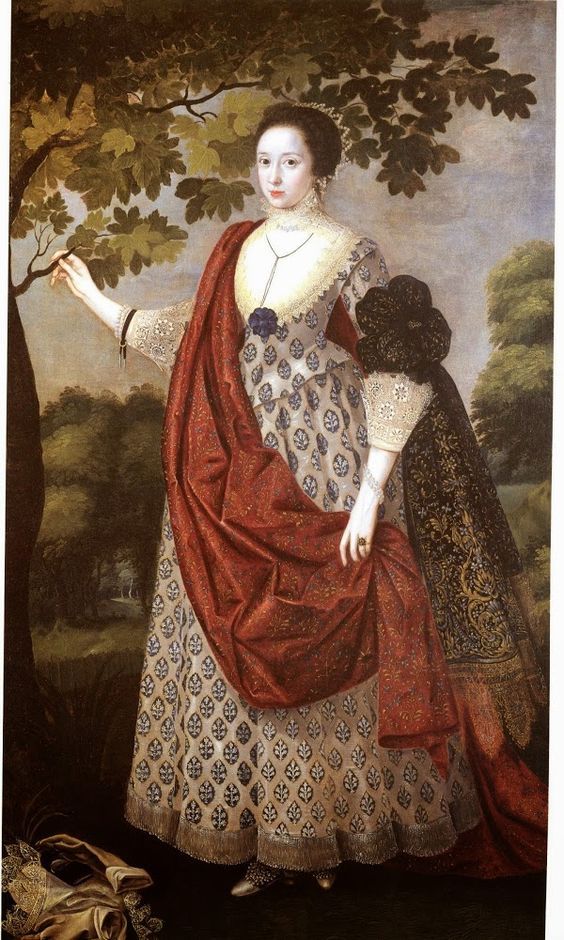

Here the first, very much showing nipples, from c. 1630. The second from 1632.
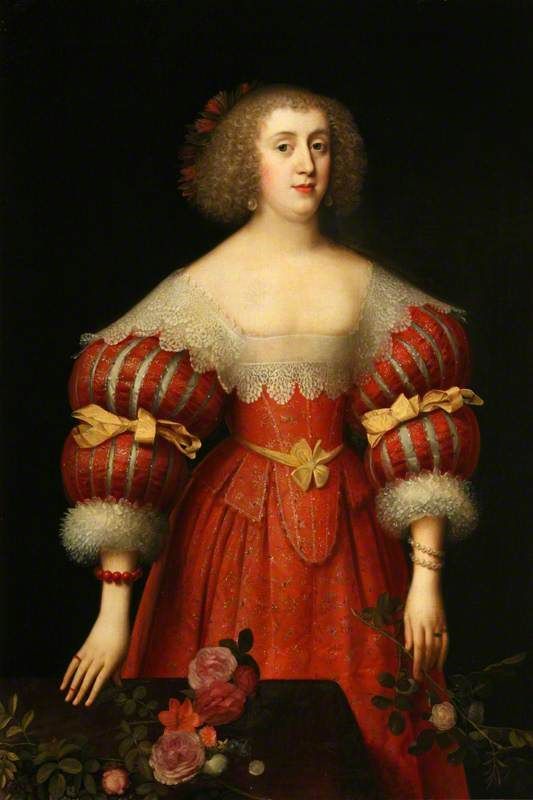
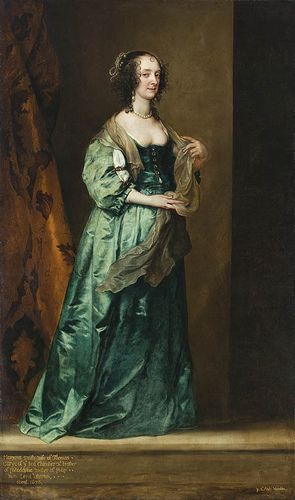
The neckline would slowly and slightly rise during the next decades, but nip slips were still expected. Here's an example from 1649 and then from 1650-55. In 1660s the neckline would get still slightly higher and by 1870s it was in a not very slippable hight. The necklines would stay low for the next century, though mostly not in boob showing territory, but we'll get there. But I will say that covering the neckline in casual context was expected. Boobs were mostly for fancy occasions. It was considered vain to show off your boobs when the occasion didn't call for it and covering up during the day was necessary for a respectable lady. You wouldn't want to have tan in your milk-white skin like a poor, and also they didn't have sun screen so burning was a reasonable concern.

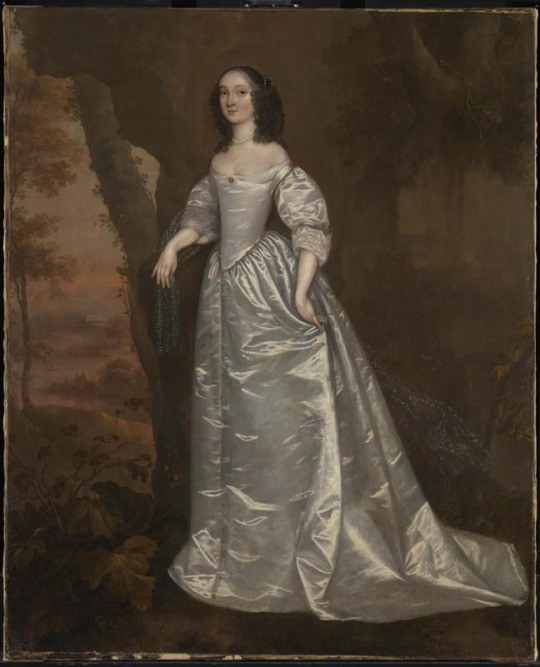
1720s to 1740s saw necklines that went to the nip slip territory, though they didn't go quite as low as 100 years earlier. The nipple was present in the French courtly fashion especially and rouging your nipples to enhance them was popular. Émilie Du Châtelet (1706-1749), who was an accomplished physicist and made contributions to Newtonian mechanics, was known in the French court to show off her boobies. An icon. Here she is in 1748. Here's another example from this era from 1728.
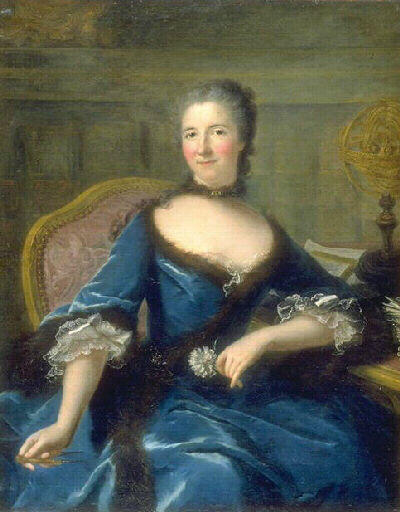
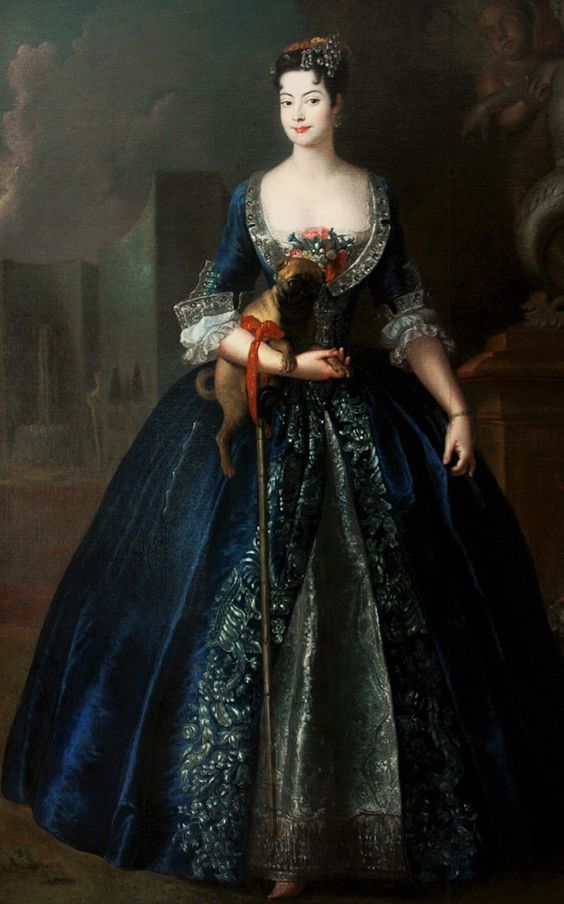
The Rococo neckline never got high, but in the middle of the century it was less low till 1770s when it plunged into new lows. In 1770s the fashion reached a saturation point, when everything was the most. This included boobs. The most boob visible. There was a change in the attitudes though. The visible boob was not a scandal, but it was risque, instead of sing of innocent and did cause offense in certain circles. I think it's because of the French revolution values gaining momentum. I talked about this in length in another post, mostly in context of masculinity, but till that point femininity and masculinity had been mostly reserved for the aristocracy. Gender performance was mostly performance of wealth. The revolutionaries constructed new masculinity and femininity, which laid the groundwork for the modern gender, in opposition to the aristocracy and their decadence. The new femininity was decent, moral and motherly, an early version of the Victorian angel of the house. The boob was present in the revolutionary imagery, but in an abstract presentation. I can't say for sure, but I think bare breasts became indecent because it was specifically fashion of the indecent French aristocracy.
Here's example somewhere from the decade and another from 1778. The neckline stayed quite low for the 1780s, but rose to cover the boobs for the 1790s.

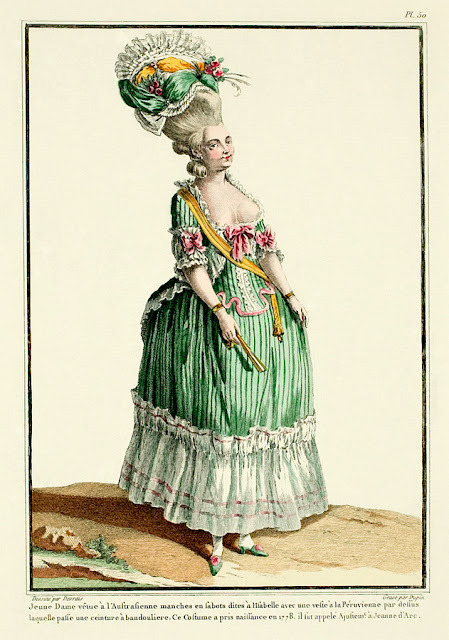
The nipple didn't stay hidden for long but made a quick comeback in the Regency evening fashion. It was somewhat scandalous by this point, and the nipple and sheer fabrics of the Regency fashion gained much scorn and satire. The styles that were in the high danger nip slip territory and those that allowed the nipple to show through fabric, were still quite popular. The sleeves had been mid length for two centuries, but in 1790s they had made a split between evening and day wear. The evening sleeves were tiny, just covering the shoulder. Showing that would have been a little too much. Like a bare boob? A risque choice but fine. A shoulder? Straight to the horny jail. (I'm joking they did have sheer sleeves and sometimes portraits with exposed shoulder.) But long sleeves became the standard part of the day wear. Getting sun was still not acceptable for the same reasonable and unreasonable reasons. Day dresses did also usually have higher necklines or were at least worn with a chemisette to cover the neckline. Fine Indian muslin was a huge trend. It was extremely sheer and used in multiple layers to build up some cover. There were claims that a gust of wind would render the ladies practically naked, though because they were wearing their underclothing including a shift, which certainly wasn't made from the very expensive muslin, I'm guessing this was an exaggeration. Especially though in the first decade, short underboob stays were fairly popular, so combined with a muslin, nipples were seen. Here's an early 1798 example of exactly that. The short stays did disappear eventually, but in 1810s the extremely small bodices did provide nip slip opportunities, as seen in this 1811 fashion plate.
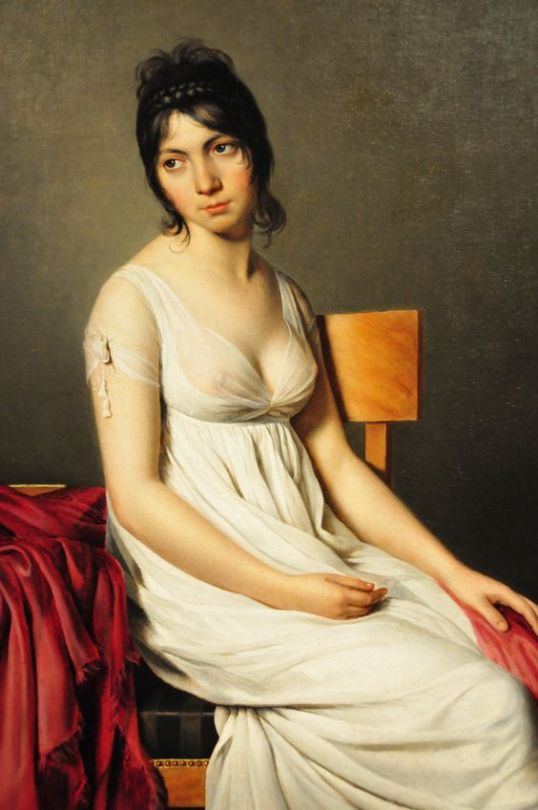
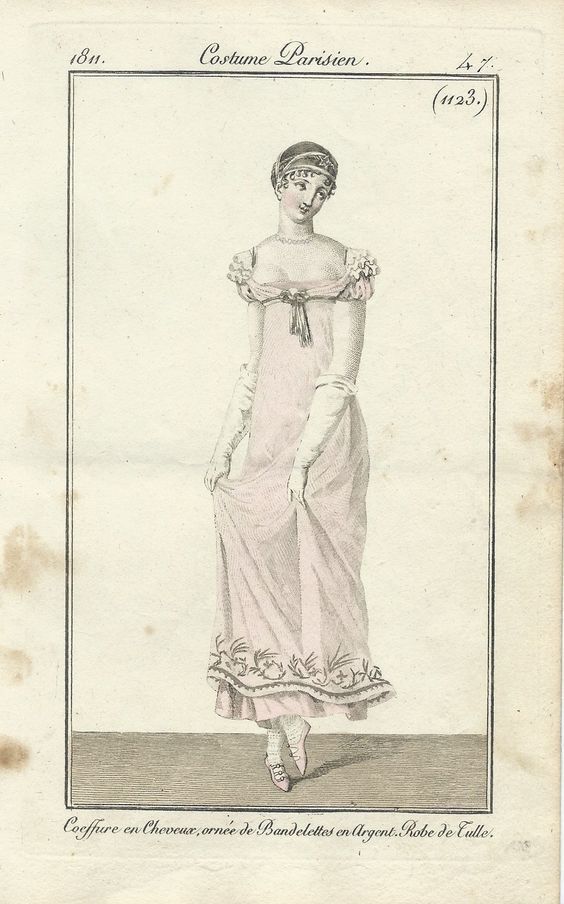
Victorian moralizing did fully kill the nip slip, though at least they were gender neutral about it. The male nipple was just as offensive to them. In 1890s, when bodybuilding became a big thing, bodybuilder men were arrested for public indecency for not wearing a shirt.
#there was also the new femininity aspect to regency nipple which had to do with breastfeeding becoming fashionable among upper class#it's about the whole motherly thing that came with the french revolution#i can't remember the book i read it from so i didn't go into it because i couldn't remember the details lol#but it did definitely have an effect to the fashion and to the perception of nipple#historical fashion#fashion history#history#dress history#fashion#answers#painting#fashion plate#renaissance fashion#elizabethan fashion#rococo fashion#baroque fashion#regency fashion#will tumblr prove itself to be again more prudish than elizabethans and label my post as mature content?#remains to be seen
504 notes
·
View notes
Text
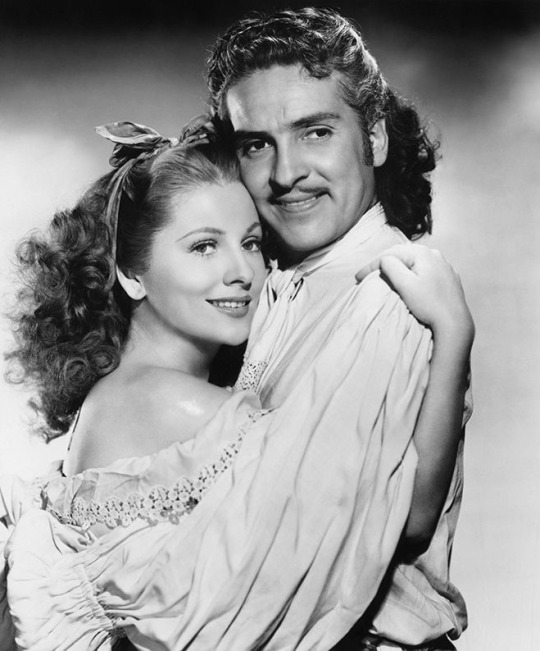
Joan Fontaine and Arturo de Córdova in Frenchman’s Creek 1944 🏴☠️
#old hollywood#beauty#romantic drama#adventure#swashbuckler#joan fontaine#arturo de Córdova#1940s cinema#Daphne du Maurier#1660s fashion#17th century
20 notes
·
View notes
Photo
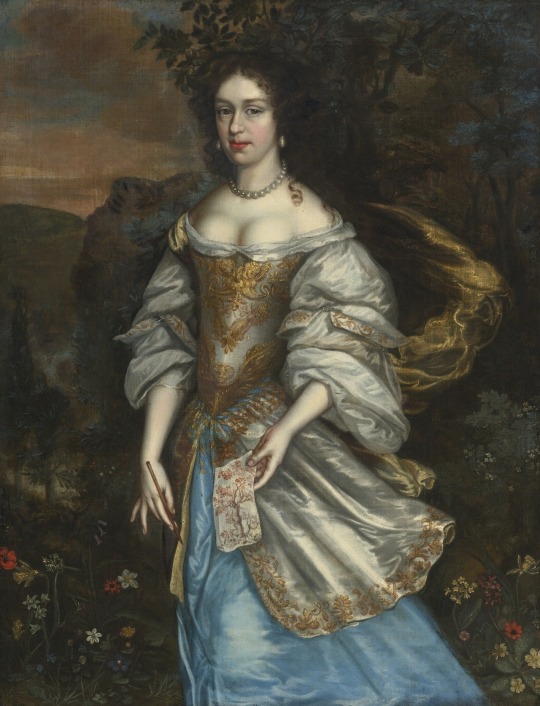


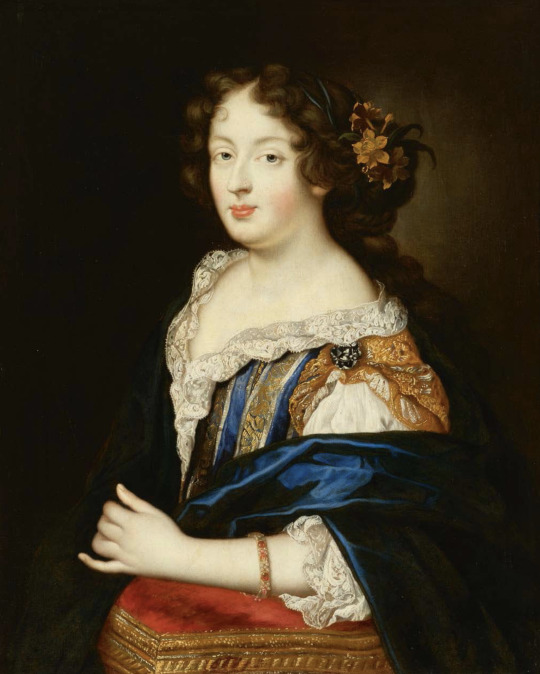
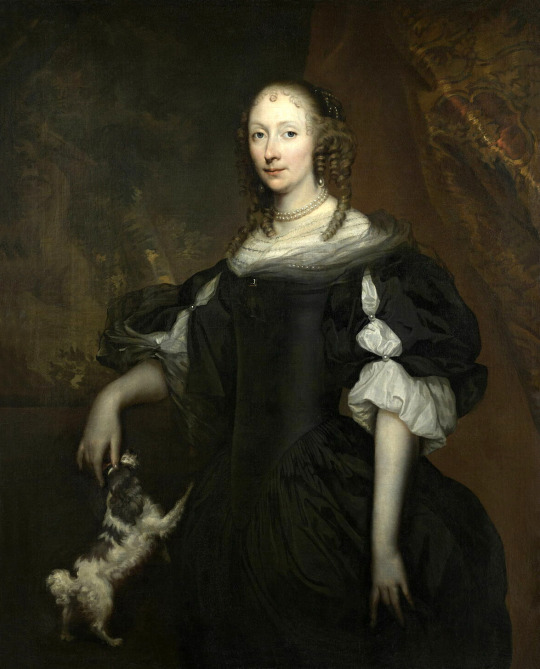
Baroque dresses and a super-celebrity -
Top Lady in a gold and blue dress by Dutch school (location ?). From tumblr.com/catherinedefrance 1280X1673 @72 840kj.
Second row left 1653 Woman by Adriaen Hanneman (State Pushkin Museum - Moskva, Russia). From tumblr.com/history-of-fashion 965X1200 @72 220kj.
Second row right 1670 Dudleia Cullum, née North, Lady Cullum by Sir Peter Lely (St Edmundsbury Museums - St Edmundsbury, Suffolk, UK). From tumblr.com/fashion-inspiration-s; fixed spots w Pshop 989X1200 @72 328kj.
Third row Presumed portrait of Olympe Mancini by French school (Aguttes - 6Dec22 auction Lot 43). From their Web site 2252X2812 @144 4.5Mp. She and her sisters and two related Martinozzi girls made a major splash when Cardinal Mazarin introduced them to the French court.
Fourth row 1660-1680 Noble lady with a dog by Jan de Baen (Louvre). From tumblr.com/history-of-fashion 1176X1456 @72 500kj
#1640s fashion#1650s fashion#1660s fashion#1670s fashion#Baroque fashion#Louis XIV fashion#curly hair#bertha#off shoulder scoop neckline#V waistline#three-quarter length puffed sleeves#over-skirt#Adriaen Hanneman#hair mat#side curl coiffure#hair jewelry#straight neckline#lace modesty piece-bertha#Dudleia Cullum#chemise#Olympe Mancini#hair flowers#off shoulder V décolletage#Jan de Baen
22 notes
·
View notes
Text




Knitted Shirt
1650s-1690s
Norway
Nasjonalmuseet (Inventory no.:OK-08800)
#shirt#fashion history#historical fashion#17th century#norway#knitwear#stuart era#1650s#1660s#1670s#1680s#1690s#blue#gold#nasjonalmuseet#before anyone jumps on me about that stuart era tag#i know but i also don't have a good era tag to throw it in#so into the stuart tag it goes
265 notes
·
View notes
Text
Fashion history resources?
researching fashion for the various time periods has been driving me a little crazy, particularly because when you search up historical fashion, the results overwhelmingly trend towards upper class women (usually aristocracy), then upper class/aristocratic men, then middle class men/women, with little representation of working class women and even less for working class men. (This obviously depends on time period and country; currently, I'm scrounging around for references for servants in 1660s France. Non-European fashion is even harder to research).
So, I figured it could be good to start a chain of resources on fashion history! Here's two that I've been using heavily in researching my current WIP:
Nicole Kipar's Restoration Costume Comes to Life
This truly lovely website which details costumes of the Restoration (1660s England, mostly), and has a gallery collection of paintings of working class people with annotations on what they're wearing, the time period, and their specific social role (i.e., poor peasant, affluent peasant, market trader). It's designed for costume makers, but it's also useful for artists or writers. There are five parts: working class men and women, women of the gentry and aristocracy, men of the gentry and aristocracy, accessories, and a costume focus.
Fashion History Timeline
It is what the name suggests: open source fashion history timeline from prehistory to (afaik) 19th century. I haven't explored much beyond 1660s yet, and generally does seem to focus on fashion of the upper classes, but it's already been so useful.
If anyone has any websites/books/other resources to add, please do!
957 notes
·
View notes
Text
“Everywhere Europeans looked, the indigenous people they happened upon had their own ideas of how men and women should behave. Chief among them were notions about the kind of work men and women should each perform. These differences were deeply unsettling to the colonists.
…English migrants in the 17th century were not trying to re-imagine what it meant to be male or female. Instead, these first European settlers hoped their culture and their working lives could be easily transplanted. Immigrant women and men would each perform their customary duties; husband and wives would find their roles and their relationships appreciably unaltered.
…Almost every woman who left England for Virginia or Maryland in the early 17th century would have expected to work--and work hard--from the moment she reached her destination. Between 80 and 90 percent of the English folk who emigrated to that region, and virtually all of the women, came as indentured servants. …At first, these young women toiled for men who were their masters. After their debts had been satisfied, they might work alongside their husbands on small plantations. In either case, their labors would be shaped by the broader goal of the regions’ economy: extracting from the soil the maximum possible volume of tobacco, the intoxicating leaf Londoners were craving.
…Conditions in the Chesapeake were mean--even by the standards of those who, like most indentured servants, came from the lower rungs of English society. The average planter was likely to inhabit an unpainted wooden dwelling no larger than 25 by 18 feet--about the size of a modern two-car garage. …The indentured servant’s clothing and meals were likely to be as rude as her dwelling place. Her skirts and aprons would have been fashioned of a blend of the coarsest linen and wool. And her diet, as one traveler to the region reported, consisted mainly of a ‘somewhat indigestible soup’ of ground corn. Not surprisingly, serving girls eking out this kind of meager existence often succumbed to the Chesapeake’s many endemic diseases. Malaria, pellagra, dysentery, and deadly ‘agues and fevers’ killed off many during the crucial first six months of ‘seasoning,’ as getting used to the climate was called.
…On the positive side, it meant that virtually every female migrant would eventually find a husband--should she live long enough to attain her freedom. (Indentured servants, male and female, were forbidden to marry.) But it also meant that English notions of the proper sexual division of labor simply could not apply. In a colony where land was abundant and labor was scarce, a certain degree of flexibility regarding one’s day to day tasks was an absolute necessity.
…For men and women alike, the workday stretched from sunrise to sunset, with time off during the heat of the day in the warmer months. In the winter--the beginning of the tobacco production cycle--an Englishwoman would have spent those hours helping her master or her husband plant crops and enrich the seedbeds. By late April, she might have been called upon to transplant the tiny seedlings to the main fields--a delicate task that demanded the intensive effort of the whole plantation labor force over a period of several months. In June, July, and August, her deft hands would hoe and weed the tiny hills surrounding each plant and keep the plants free from worms. September brought the arduous labor of cutting and curing the mature leaves; this was typically men’s work.
…At first, few women could be found among the enslaved labor force of the southern colonies. Most 17th-century planters thought that strong male hands made better investments. Until the 1660s, two African men were imported for every African woman. But as white settlers began to turn the servitude of blacks into chattel slavery--a lifelong, even hereditary state--the logic of enslaving more women became clear. Enslaved men could labor only so many hours in the course of a day. But, as the masters saw it, enslaved women were always working, even when they were feeding their families or delivering babies.
…Slave women deemed incapable of field labor--the very young, the infirm, and the very old--might be put to work in household service. In the first half of the 18th century, these indoor workers accounted for a distinct minority of female slaves, well under 20 percent. And being assigned to the plantation household was not necessarily desirable. …Slave women who worked in their mistresses’ homes were always on call. Their duties ranged from hard, physical labor like doing laundry and toting water, to such routine drudgery as emptying chamber posts and making beds.”
Jane Kamensky, “To Toil the Livelong Day: Working Lives” in The Colonial Mosaic: American Women, 1600-1760
17 notes
·
View notes